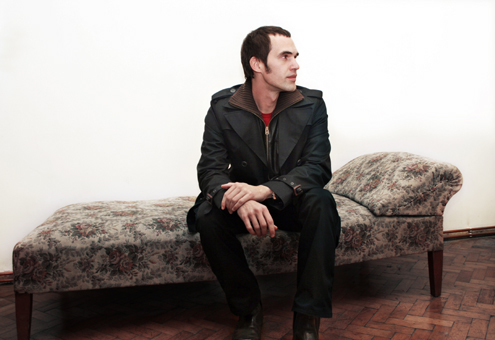
Story by Stefan Németh
Photo by Gerald Zahn
My personal approach to film music is it’s often better to have less sound than too much. Film scores can have their own life, but they always have to serve the story in the movie first. This means I prefer to keep the sound as minimal as possible most of the time. A few notes or a single sound can often be much more pleasant for me, because it does not interpret the optical input too much. The audience has to bring it all together and a little blank space or mystery in a scene leaves it open to the individual how to see things.
So it is with the ambience sounds, the “real world,” which I try to bring into the music in a slightly modified and processed form. This is the link to the recordings done on location. And it is often the starting point for music in the common sense. It makes it possible to find a logical relation between music, sound design and recordings on location.
Németh talks about his favorite film soundtracks after the jump …
Andrej Tarkowskij, Stalker
This movie made it especially clear to me how important silence can be. There is this wonderful scene where the three characters make their journey into the ‘zone’ and sit on a little wagon, which slowly moves along the tracks. You can only hear the sounds produced by the wagon–a static rhythm. And slowly, without really noticing it, this sound fades into the film score, which is strongly connected to the real ambient sound. One blends into the other–very softly, very carefully, the audience gets introduced to artificial soundscapes.
Andrej Tarkowskij, Solaris
Again, this is a masterpiece of a carefully composed film score. The music was written by Eduard Nikolajewitsch Artemjew, who can be mentioned as one of the pioneers of electronic music in the genre of music for films. The extensive use of electronic instruments and processing tools supports the alienating feeling and the complex background of the film. I believe that in contrast to a lot of electronic scores of this time (1972), Solaris featured a visionary approach. The sounds are still fresh to my ears. Somehow timeless and they never evoke a retro-feeling. Parts of it could easily be called sound design–they are embedded in ambient sounds and it is hard to say what kind of source material it originally was. All the synth tracks are pretty complex and have a lively expression, something which is also important to me.
Walter Salles, Motorcycle Diaries
The film score for Motorcycle Diaries was composed by Gustavo Alfredo Santaolalla, who also worked on a lot of Alejandro González Iñárritu’s other films (Babel, Amores Perros). The plasticity of the guitar on the main theme is so amazing. Often a single note has such a great impact on the mood in the film. The themes are simple, but the notes are placed so carefully! In Motorcycle Diaries it seems that Santaolalla mixes a small ensemble–bass, guitar and percussions–with (in my opinion) electronically processed sounds of these instruments. The electronics are mixed in the background and give the music a much deeper and mysterious touch … wonderful!
Peter Tscherkassky, Outer Space
The source material for the experimental film Outer Space was a horror movie, which was radically processed by “analogue“ (mechancial, optical and probably chemical) means and assembled, layered and cut to give birth to a completely new film. A lot of attention was given to reflect the material “film” itself. So it is with the music. One can hardly speak of a regular soundtrack, but you can nearly feel the cuts and perforation of the film with each click. When you hear a rough hum it seems that the (damaged) optical audio-track directly speaks to you. What you see is what you hear. For my work the quality and material of the footage has a great impact on the music and I try to synthesize elements to bring these qualities into the soundtrack as well.
Németh’s first solo album, Film, is out now on Thrill Jockey. He also plays in Radian and Lokai.

